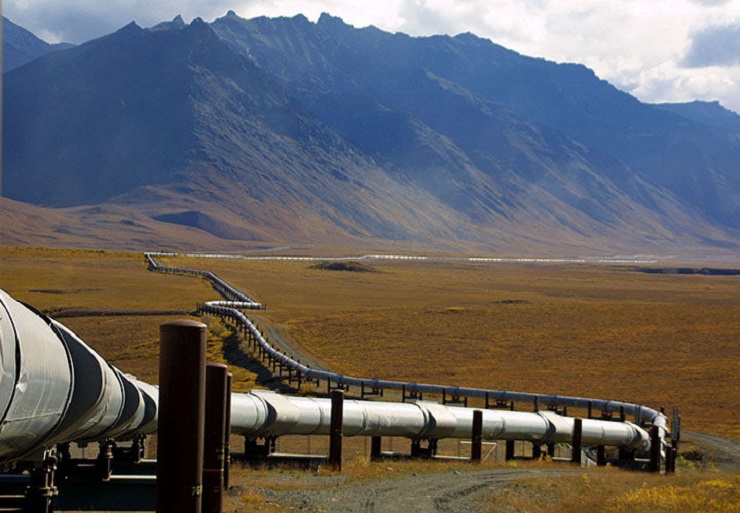Last two weeks saw Saudi Arabi’s Mohammad bin Salman (MBS) visiting Asia—Pakistan, India and China— for the first time ever. Promises of investment were made, signalling how Saudi Arabia was pushing towards expanding its economy globally. Although the visit seems to have been partially motivated by the cold-shoulder MBS/Saudia continue to receive from the West after the Khashoggi incident, there is more to this visit and billion-dollar investments than just a search for ‘new friends’ and a face-saving. At the heart of it is a practical manifestation of MBS’ vision 2030 plan, whereby the Saudis need to expand in order to avoid an economic doom. But this economic expansion certainly has its geo-economic repercussions, particularly with regard to Saudi position vis-à-vis Iran in that part of Asia where new geographies of trade, commerce and economy are being constructed in the from of China’s BRI and CPEC and the greater Eurasian connectivity projects. Indeed, the Saudis want to displace Iran in many of the latter’s oil markets. This is evident from a chain of petrochemical complexes and refineries the Saudis have promised to build in India, China and Pakistan.
The intent of MBS to globalise his vision 2030 plan was evident when he offered the Chinese to participate in this programme, which focuses more on renewable sources of energy and reduce Saudi economy’s dependence on oil. Surely, the intent was to integrate the Chinese in order to secure a bigger supply of Saudi oil to them and thus displace Iran. Already in some western markets, the Saudis have been offering discounted prices to many of Iran’s customers. And, by doing the same to the Chinese, the Saudis are aiming to hurt Iranian economy, which has already lost many buyers of its oil due to the U.S. sanctions. China is one country where Iranian oil continues to be supplied in huge quantities.
China, where the demand for oil is always high and a competition between Iran and Saudi Arabia would ultimately benefit it not only in terms of the competitive prices but also diversified sources of supply, has accordingly entered into an agreement, a $10 billion energy deal, with the Saudis according to which the Aramco State Oil Company and China’s Norinko Corporation would build a refinery and a petrochemical complex in the city of Punjin in northeastern China.
As in China, in Pakistan also the Saudis are going to build a refinery in the strategically significant port of Gwadar. By doing that, not only would the Saudis be doing a major investment on a key port of CPEC but also be making sure that Pakistan remains firmly in the Saudi camp. Pakistan’s close ties with the Saudis would mean Pakistan’s bad relations with Iran. Its effects have already become apparent from how the previously emphasised border-security cooperation between Pakistan and Iran has already burst into a wave of allegations by Tehran against Islamabad about harbouring militant groups that were behind a recent attack on the revolutionary guards that killed over two dozen of men.
Clearly, Iran is sensing how cooperation with Pakistan, a country that is facilitating a Saudi presence close to its borders and ports, is likely to be an extremely difficult venture even with Chinese help, meaning thereby that a Saudi presence in this part of Asia would not only change market patterns of oil supply but also shape geo-politics to the extent that some countries might get permanently locked into rivalry, and some may start finding it extremely difficult to continue cooperation in the same way they have done in the past.
While the first category of countries fits Pakistan-Iran relations, the second category fits India-Iran ties. Saudi Arabia’s joint investment with UAE in the world’s biggest refinery and petrochemical plant in India are an expression of the former’s interest to expand its oil market and displace that of Iran. As it stands, more than 50 percent of the oil coming to this refinery would be of Saudi Arabian origin.
“By investing in this project, we will both secure off-take of our crude to a key market for Adnoc, as well as strengthen access in one of the world’s largest and fastest growing refining and petrochemical markets,” said Sultan Ahmed Al Jaber, UAE state minister and Adnoc group chief executive.
This means that Saudi Arabia would displace Iran as a major supplier of oil to India. Already, due to American sanctions, India’s oil imports from Iran have decreased significantly, forcing Iran’s position on the ladder of biggest suppliers to India scale downwards. As such, while Iran’s supply of oil to India declined by 21 percent in November-December 2018, Saudi Arabian supply increased by almost 10 percent.
There is as such a clear intent of not only deepening Saudi economic relations with some major Asian countries, but also an intent of doing it in a way that would present a direct competition to Iran, Saudia’s traditional rival state in the Middle East.
The Saudis were, as such, here not just to get a red-carpet reception and show the world how MBS is turning into a globally accepted leader of Saudi Arabia, there is a bigger plan at work: the plan of gaining a direct and a strong foothold in Asia, including at the crossroads of the New Silk Roads.
How this would affect Iran is evident from the way Iran’s senior leadership, including the foreign minister, were in China only days before MBS visit to ensure that the Saudi coming wouldn’t harm their interests. But this is something that can’t happen unless these countries can somehow block Saudi investment—something that is probably impossible. The silver-lining for Iran, however, remains that it happens to be China’s best territorial link to both Central Asia and Europe. and China is always eyeing to really deepen its ties with it.
Salman Rafi Sheikh, research-analyst of International Relations and Pakistan’s foreign and domestic affairs, exclusively for the online magazine “New Eastern Outlook”.
